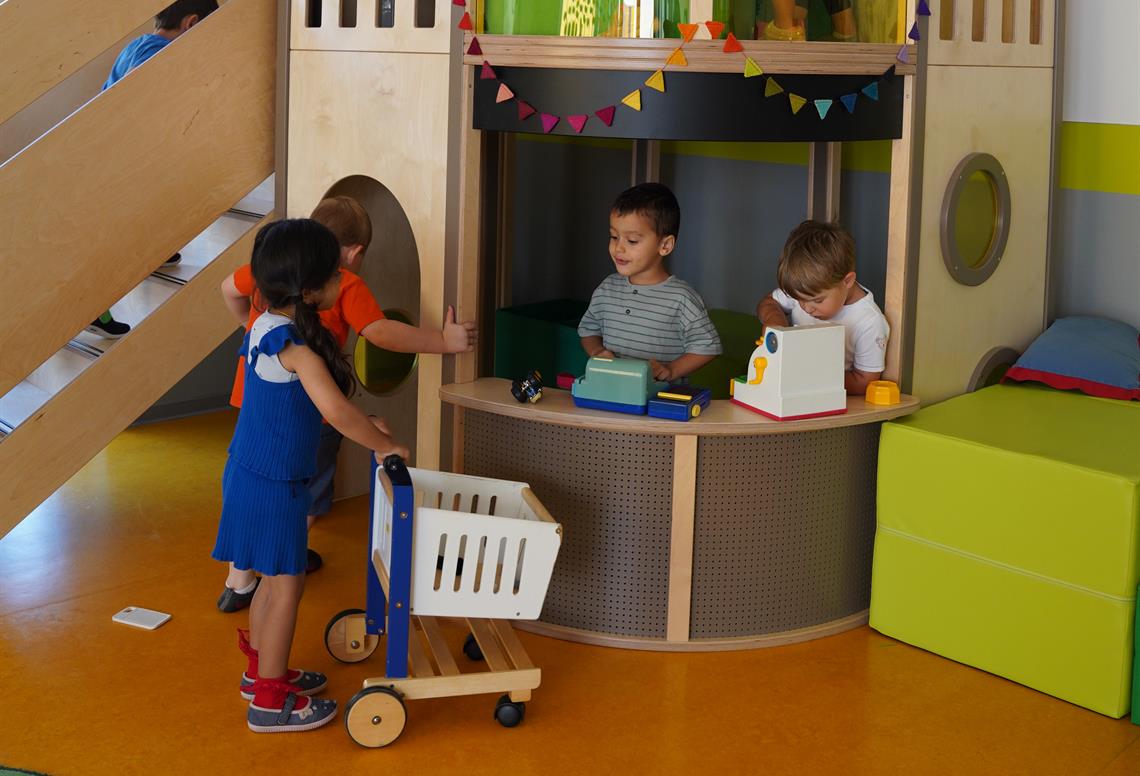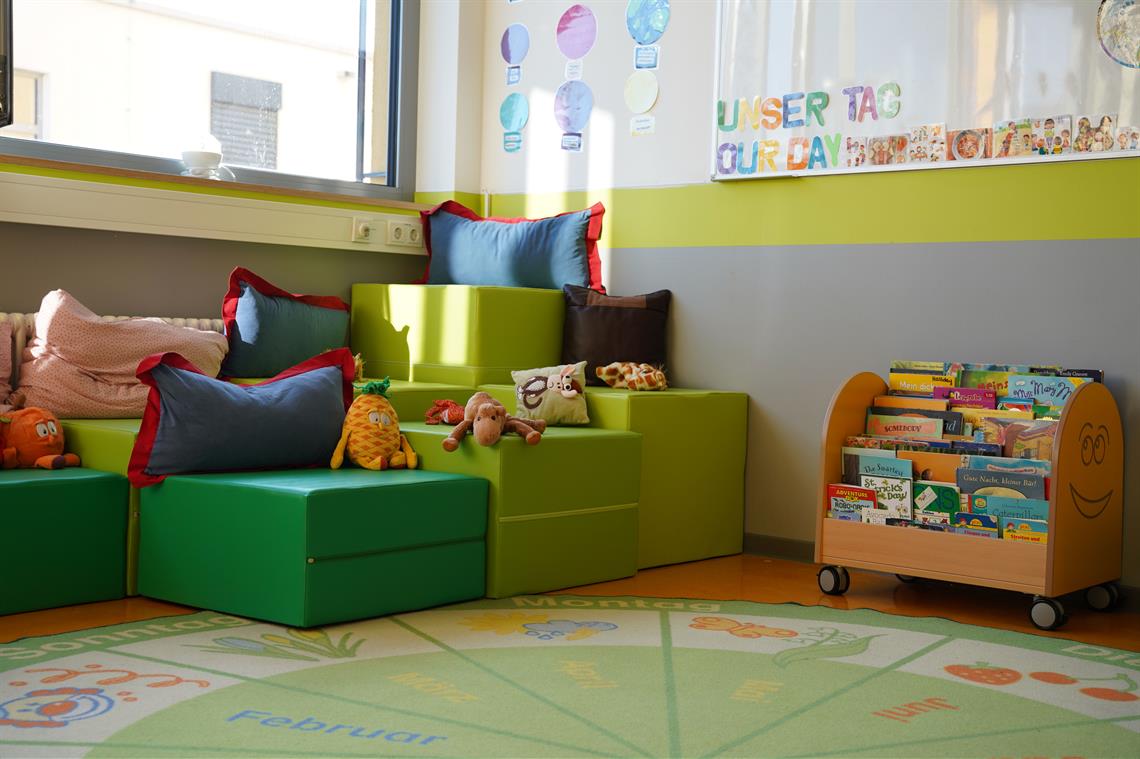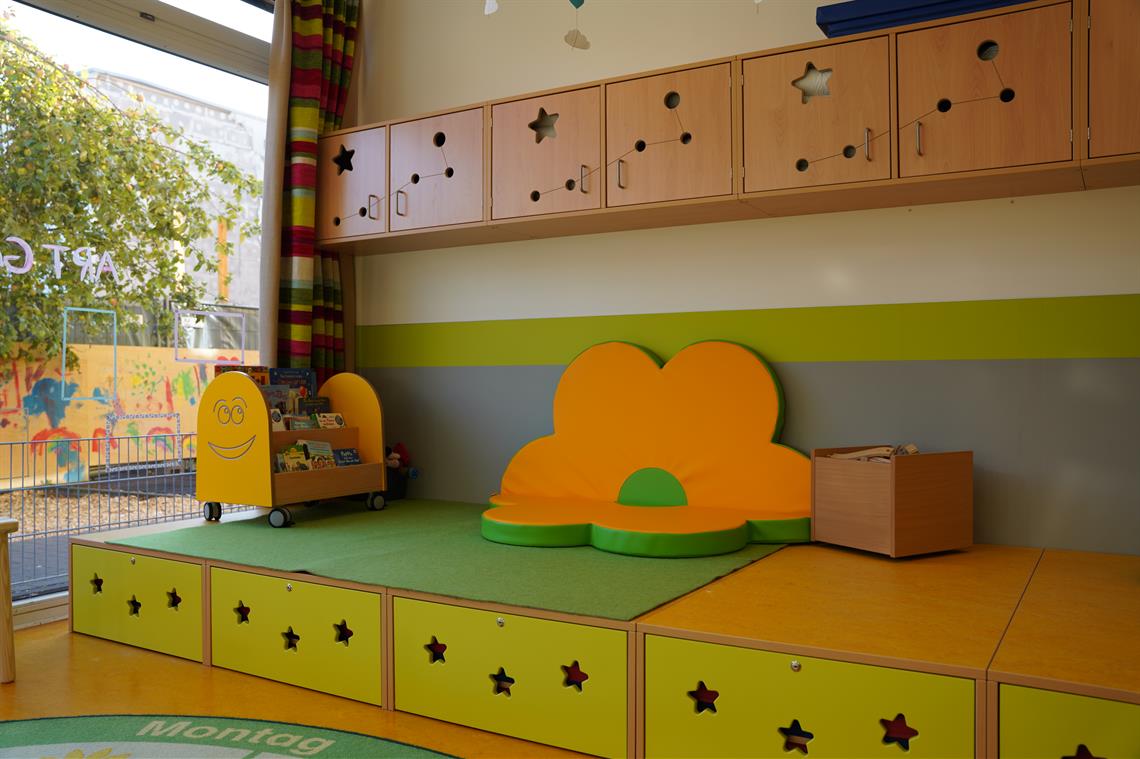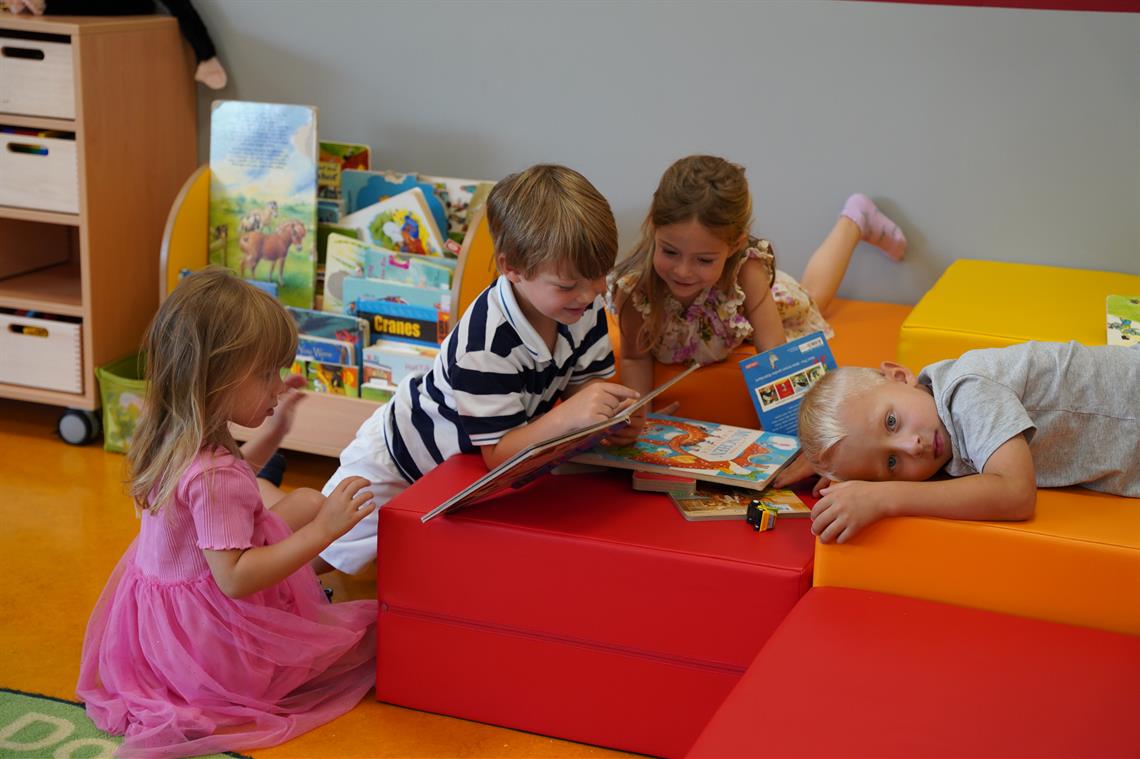
During the summer vacation, accadis International School Bad Homburg (accadis ISB) completely renovated the rooms of its Bilingual Preschool. On the occasion of the 20th anniversary, the room concepts of the groups were revised and modernized. Children and parents can look forward to new play and crib castles, versatile sleeping platforms, dollhouses, castles and puppet theaters on wheels.
Modernization in line with the latest pedagogical findings

accadis ISB modernized its Bilingual Preschool to bring the learning environment in line with the latest educational findings and the evolving needs of children. "When selecting the furniture, we took into account the different age groups and daily routines within the groups, focusing on movement, creativity and sustainability," explains Petra Andrea Schmidt, Head of Early Childhood Education.
Optimized spaces for more movement and flexibility

Spaces already designed to meet children's needs have been optimized. New play and crib castles provide even more opportunities for active play and encourage children's natural urge to move. In addition, the flexible room design with mobile furniture allows for versatile use of the areas, which can be adapted to different activities and learning phases. Toys such as dollhouses, castles and even the puppet theater are now on wheels, so they can be easily moved around within groups, providing a constant source of stimulation.
Sustainability as a guiding principle of modernization

Sustainability played an important role in the modernization. Much of the existing, well-maintained furniture was consciously reused, supplemented by new furniture made from environmentally friendly materials. This decision reflects an effort to conserve resources and to model responsible environmental stewardship for the children.
Unleashing creativity and encouraging participation: The Toy-Free Week as Part of the Renovation
Prior to the renovation, a "toy-free week" was held to focus on the children's creativity and imagination. During this time, no traditional toys were used. Instead, the children made a tree out of collected branches and leaves, built birdhouses out of recycled materials, and baked waffles together. These activities allowed the children to be creative with simple materials and to let their ideas flow. "It was important for us to involve the children in the modernization. The toy-free week allowed us to explain what was happening and prepare them for the fact that everything would look different and new after the holidays," says Petra Andrea Schmidt.
New extracurricular activities: Robot games

In order to prepare the children for the digital world at an early stage, a new room for project work and differentiated learning has been added, equipped with Smartboard technology. The extracurricular Robot Games course offers a child-friendly introduction to the world of programming. In addition to the already established sports, music, dance and art programs, this course will expand the preschool’s afternoon program. Children ages 4 and up will be introduced to robotics and programming through play in a safe environment.
Conclusion After the First Week
"It's just wonderful," says Anke Tena, Director of Early Childhood Education. Parents are also enthusiastic, highlighting the newly gained space and bright rooms. "Oh wow, this looks beautiful!", "So nice and open, now the children have even more space to play," and "Great, so bright and inviting" are just some of the excited reactions.